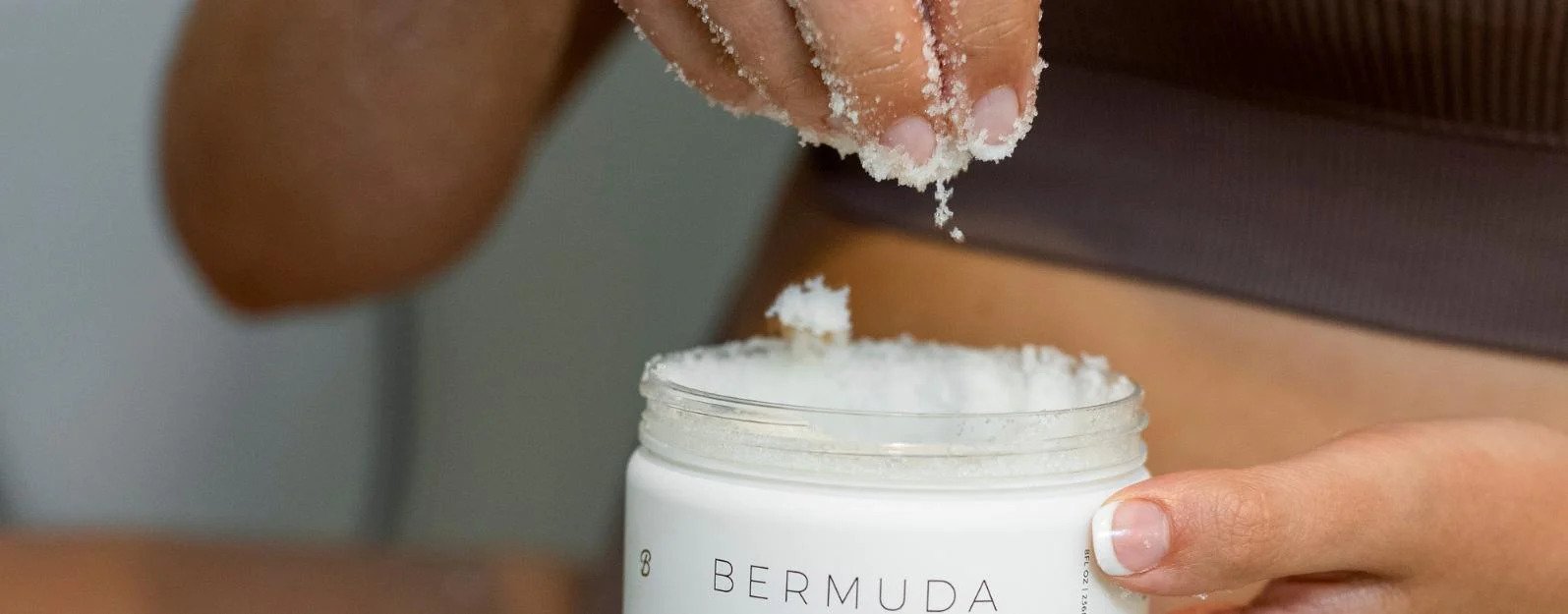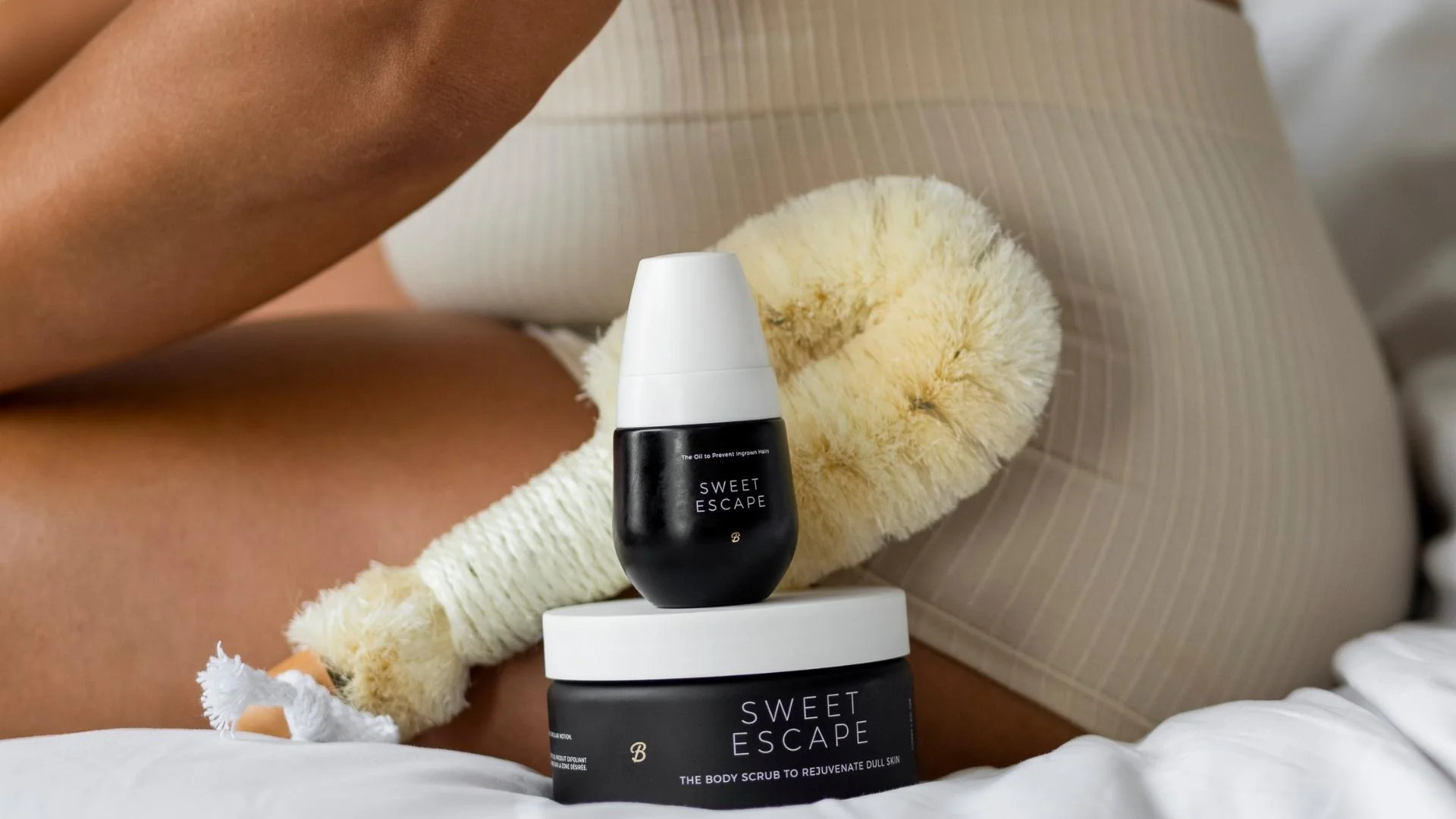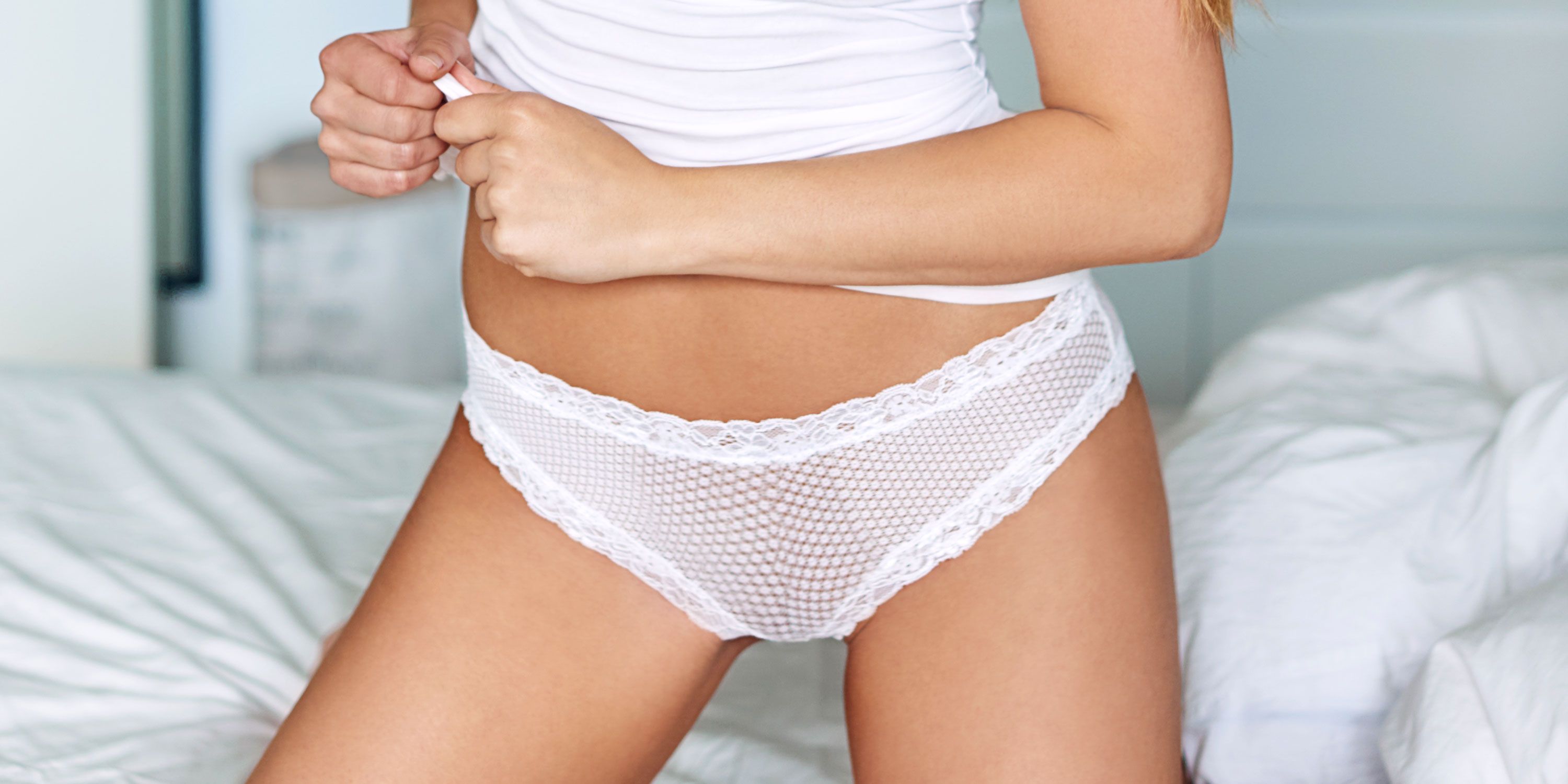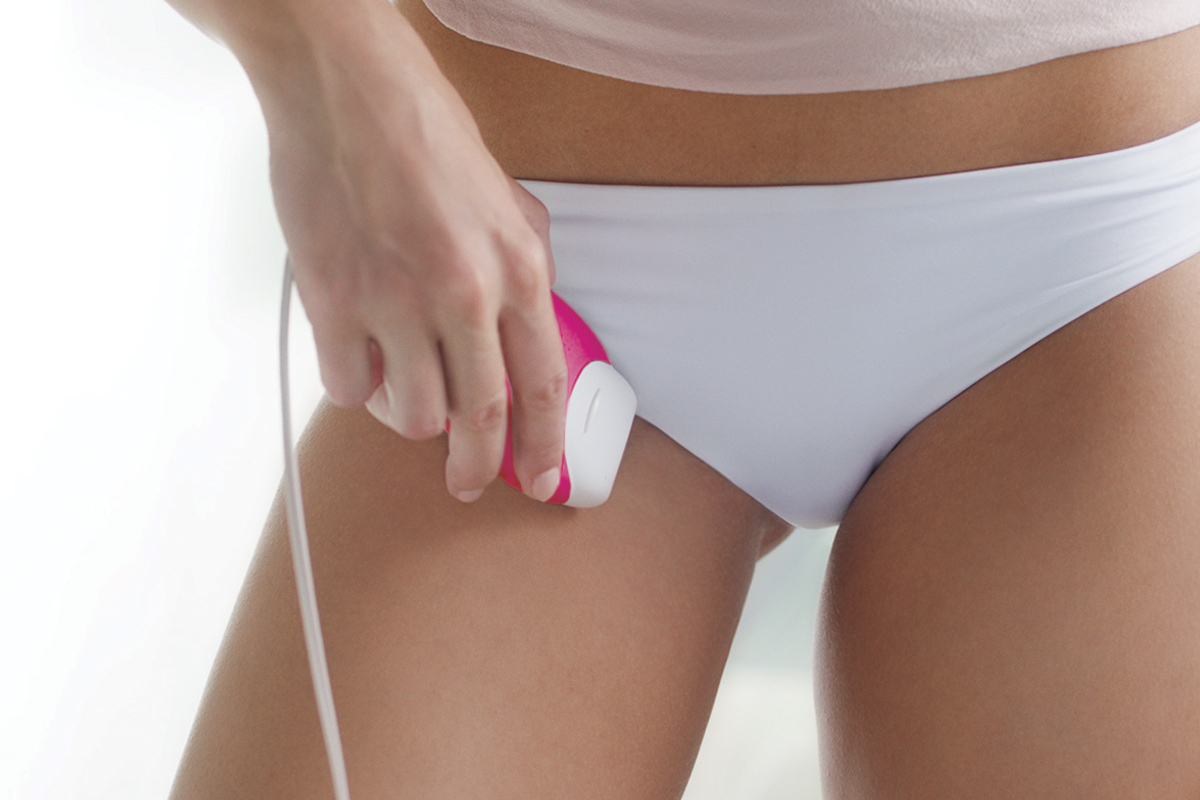

FAQs
How Often Should You Exfoliate Bikini Area
Modified: August 5, 2023
Discover how often you should exfoliate your bikini area. Get answers to general questions about proper exfoliation techniques and frequency for maintaining smooth and healthy skin.
(Many of the links in this article redirect to a specific reviewed product. Your purchase of these products through affiliate links helps to generate commission for Under-tec.com, at no extra cost. Learn more)
Table of Contents
Introduction
Welcome to our guide on how often you should exfoliate your bikini area. Taking care of your skin is essential, and exfoliating is an important step in any skincare routine. While exfoliation is commonly practiced on the face and body, many people overlook the bikini area.
Your bikini area is a sensitive and delicate part of your body that requires proper care and attention. Exfoliating this area not only helps to remove dead skin cells and unclog pores, but it also helps to prevent ingrown hairs and maintain smooth, even-toned skin. However, it is crucial to strike a balance when exfoliating this area to avoid irritation or damage.
In this article, we will explore the factors you need to consider when determining how often to exfoliate your bikini area. We will discuss how your skin type, frequency of hair removal, and lifestyle choices impact the exfoliation process. Additionally, we will provide tips for effective exfoliation and highlight potential risks and precautions.
By the end of this guide, you will have a better understanding of how to properly care for your bikini area and achieve optimal results through regular exfoliation.
Why Exfoliation is Important for the Bikini Area
Exfoliation is an essential step in maintaining the health and appearance of your skin, and this holds true for the bikini area as well. Here are some reasons why exfoliating your bikini area is important:
- Removal of dead skin cells: Like any other part of your body, the bikini area can accumulate dead skin cells over time. Exfoliating helps to slough off these dead skin cells, revealing fresher and healthier skin underneath.
- Prevention of ingrown hairs: Ingrown hairs are a common concern in the bikini area. By exfoliating regularly, you can help prevent ingrown hairs by removing the buildup of dead skin cells, thus allowing the hair to grow freely without getting trapped beneath the skin’s surface.
- Unclogging of pores: The bikini area is prone to develop clogged pores, leading to the formation of blackheads or pimples. Exfoliating helps to remove dirt, oil, and debris that can clog the pores, promoting a clearer and healthier complexion.
- Improvement of skin texture: Regular exfoliation can help improve the texture of your skin in the bikini area. By removing dead skin cells, the skin becomes smoother and softer, creating a more polished and even appearance.
- Enhanced absorption of skincare products: When you exfoliate, you create a clean and receptive canvas for other skincare products, such as moisturizers and serums, to be absorbed more effectively. This allows these products to work more efficiently in nourishing and hydrating the skin in the bikini area.
Overall, exfoliating the bikini area is crucial for maintaining healthy and beautiful skin. It helps to promote a smoother texture, prevent ingrown hairs, unclog pores, and optimize the absorption of other skincare products you may use in this area.
Factors to Consider When Determining How Often to Exfoliate
When it comes to exfoliating your bikini area, there are several factors to consider in order to determine the appropriate frequency. Here are the key factors to keep in mind:
- Skin Type and Sensitivity: Everyone’s skin is unique, and the frequency of exfoliation should be tailored to your specific skin type and sensitivity. If you have sensitive skin, you may need to exfoliate less frequently to avoid irritation. Conversely, if you have thicker or oilier skin, you may benefit from more frequent exfoliation.
- Frequency of Hair Removal: If you regularly remove hair in the bikini area, such as through shaving, waxing, or sugaring, it is important to adjust your exfoliation routine accordingly. Exfoliating prior to hair removal helps to loosen dead skin cells and can improve the effectiveness of hair removal methods. However, it is generally recommended to avoid exfoliating immediately after hair removal, as this can cause further irritation.
- Impact of Clothing and Lifestyle Choices: Your clothing choices and lifestyle can have an impact on how often you should exfoliate. If you frequently wear tight-fitting clothing, such as swimsuits or workout gear, it can lead to increased friction and buildup of sweat and bacteria in the bikini area. In such cases, more frequent exfoliation may be necessary to maintain cleanliness and prevent issues like folliculitis or skin irritation.
- Personal Preference: Ultimately, the frequency of exfoliation in the bikini area can also come down to personal preference. Some individuals may find that exfoliating once or twice a week is sufficient, while others may prefer a more intense exfoliation routine. It is important to listen to your body and adjust your exfoliation frequency based on how your skin feels and reacts.
By considering these factors – skin type, frequency of hair removal, impact of clothing and lifestyle, and personal preference – you can determine the ideal frequency for exfoliating your bikini area. It may take some experimentation and observation of your skin’s response to find the right balance, but with time, you will discover the exfoliation routine that works best for you.
Skin Type and Sensitivity
When it comes to exfoliating your bikini area, understanding your skin type and sensitivity is crucial in determining how often you should exfoliate. Here’s why:
Skin Type: Different skin types have different needs when it comes to exfoliation. If you have oily skin, you may benefit from more frequent exfoliation to help remove excess oil and unclog pores. On the other hand, if you have dry or sensitive skin, it’s important to be more cautious with exfoliation to avoid irritation or stripping away too much natural moisture.
Sensitive Skin: If you have sensitive skin, you may need to take extra care when exfoliating your bikini area. Sensitive skin is more prone to irritation, redness, and inflammation, so it’s important to choose gentle exfoliating products and techniques. Consider opting for chemical exfoliants such as mild alpha-hydroxy acids (AHAs) or beta-hydroxy acids (BHAs), which are usually more gentle on sensitive skin compared to physical scrubs.
Exfoliation Frequency: As a general guideline for those with normal to combination skin, exfoliating your bikini area once or twice a week may be sufficient. However, if you have oily or resilient skin, you can try exfoliating up to three times a week. Conversely, if you have dry or sensitive skin, you may want to limit the frequency to once every week or every other week. Pay close attention to how your skin responds to exfoliation and adjust accordingly.
Signs of Over-Exfoliation: It’s important to be mindful of how your skin reacts to exfoliation. If you notice any signs of over-exfoliation, such as excessive dryness, redness, flakiness, or a “tight” feeling, it’s a sign that you are exfoliating too frequently or using products that are too harsh for your skin. In such cases, it’s essential to reduce the frequency of exfoliation and switch to milder products.
Listen to Your Skin: The key to finding the right exfoliation frequency is to listen to your skin. Pay attention to how it feels and reacts after each exfoliation session. If your skin appears radiant, smooth, and healthy, you may be exfoliating at the right frequency. However, if you experience any negative effects, adjust your routine to accommodate your skin’s needs.
Remember, every individual’s skin is unique, and what works for one person may not work for another. Understanding your skin type and sensitivity will help you determine the ideal frequency and products for exfoliating your bikini area, ensuring that you maintain healthy, glowing skin while minimizing the risk of irritation or damage.
Frequency of Hair Removal
The frequency of hair removal plays a significant role in determining how often you should exfoliate your bikini area. Here’s why:
Before Hair Removal: Exfoliating the bikini area before hair removal is beneficial for several reasons. Firstly, it helps to remove dead skin cells and exfoliate the skin’s surface, allowing for a closer and more effective hair removal process. By getting rid of this barrier, you can prevent ingrown hairs and achieve a smoother result. Secondly, exfoliating can also dislodge any trapped hairs, making them easier to remove and reducing the risk of painful or unsuccessful hair removal.
After Hair Removal: It’s generally recommended to avoid exfoliating immediately after hair removal, particularly if you’ve opted for methods like shaving, waxing, or sugaring. These procedures can cause some level of irritation or redness, and exfoliating right away may exacerbate these effects. Give your skin at least 24-48 hours to recover before resuming exfoliation.
Time Between Hair Removal Sessions: The time between your hair removal sessions can influence how often you should exfoliate. If you remove hair in the bikini area less frequently, such as every four to six weeks for waxing or sugaring, you may want to exfoliate more frequently in between sessions. This ensures that any dead skin cells or buildup of dirt and oil are effectively removed, promoting better hair removal results and preventing ingrown hairs.
Shaving Considerations: Shaving is a commonly practiced method for hair removal in the bikini area and requires its own set of considerations. Since shaving is a more frequent hair removal method, it’s advisable to exfoliate before each shaving session. This helps to lift and remove dead skin cells, allowing the razor to glide smoothly and reduce the risk of nicks, cuts, or razor burn. Additionally, exfoliating between shaving sessions can help prevent ingrown hairs and maintain smooth skin.
Ultimately, the frequency of hair removal in the bikini area will play a role in determining how often you should exfoliate. Preparing the skin before hair removal and giving it adequate time to recover afterward is essential. By aligning your exfoliation routine with your hair removal schedule, you can achieve smoother, more desirable results and prevent common issues like ingrown hairs or irritation.
Impact of Clothing and Lifestyle Choices
When it comes to exfoliating your bikini area, the impact of your clothing and lifestyle choices should not be overlooked. Here’s how they can influence how often you should exfoliate:
Tight-Fitting Clothing: Wearing tight-fitting clothing, such as swimsuits, workout gear, or synthetic underwear, can have an impact on the health of your bikini area. These types of clothing can create friction and trap sweat and bacteria, leading to skin irritation, folliculitis, or other skin issues. If you frequently wear tight-fitting clothing, it may be necessary to exfoliate more often to remove any buildup and maintain a clean and healthy bikini area.
Physical Activity: Engaging in regular physical activity, particularly activities that induce sweating, can also impact how often you should exfoliate your bikini area. Sweat and friction from exercise can contribute to clogged pores and an accumulation of dead skin cells. If you lead an active lifestyle, consider exfoliating more frequently to prevent skin congestion and maintain optimal hygiene in the bikini area.
Hair Removal Products: The use of certain hair removal products, such as depilatory creams or shaving gels, can also affect your exfoliation routine. Some of these products contain chemical ingredients that can act as exfoliants themselves. If you regularly use such products in the bikini area, it may be necessary to adjust your exfoliation frequency accordingly. Over-exfoliating in combination with these products can lead to skin sensitivity or damage, so be mindful of the ingredients and instructions provided.
Climate and Humidity: The climate and humidity levels in your environment can also impact the health of your bikini area. In hot and humid climates, sweat and excess moisture can accumulate more easily, leading to a higher likelihood of sweat-related issues such as clogged pores or folliculitis. If you live in such a climate, you may need to exfoliate more frequently to combat these challenges and prevent skin concerns.
Hormonal Factors: Hormonal fluctuations, such as those experienced during the menstrual cycle or pregnancy, can affect the condition of the bikini area. During these times, the skin may become more sensitive or prone to breakouts. To address these changes, it may be necessary to adjust your exfoliation frequency, potentially reducing it during times of increased skin sensitivity or acne breakouts.
Being mindful of your clothing choices, lifestyle factors, and hormonal fluctuations can help you determine the ideal frequency for exfoliating your bikini area. By considering these factors and making adjustments accordingly, you can maintain a healthy, smooth, and blemish-free bikini area.
Tips for Effective Exfoliation of the Bikini Area
Exfoliating your bikini area effectively requires the right techniques and tools. Here are some tips to help you achieve optimal results:
- Choose the Right Exfoliant: Selecting the right exfoliant for your skin type and sensitivity is crucial. Consider gentle options such as chemical exfoliants with AHAs or BHAs, which can effectively remove dead skin cells without being too harsh. Avoid using harsh physical scrubs or loofahs, as they can cause friction and irritation.
- Exfoliate in the Shower or Bath: Exfoliating in the shower or bath is ideal as the warm water and steam help to soften the skin, making it easier to remove dead skin cells. Make sure to wet your bikini area thoroughly before applying the exfoliant.
- Use Gentle Circular Motions: When applying the exfoliant, use gentle circular motions with your fingers or a soft washcloth. Avoid applying excessive pressure, as this can irritate the skin. Pay attention to areas prone to ingrown hairs, such as the bikini line, and ensure thorough and even exfoliation.
- Don’t Forget the Aftercare: After exfoliating, rinse off the exfoliant thoroughly and pat your skin dry with a clean towel. Apply a moisturizer or nourishing oil to hydrate and soothe the skin. Look for products that are lightweight and non-comedogenic, meaning they won’t clog your pores.
- Establish a Consistent Routine: Consistency is key when it comes to effective exfoliation. Establish a regular routine that suits your skin type and lifestyle, but be mindful not to overdo it. Exfoliating once or twice a week may be sufficient for most individuals, while others with oilier or more resilient skin may benefit from more frequent exfoliation.
- Avoid Over-Exfoliating: Over-exfoliating can lead to skin irritation, sensitivity, and damage. If you experience any signs of over-exfoliation, such as excessive dryness or redness, reduce the frequency of exfoliation or switch to a milder exfoliant. Listen to your skin and adjust your routine accordingly.
- Be Mindful of Other Skincare Products: When incorporating exfoliation into your bikini area care routine, be mindful of other skincare products you may be using. For example, if you’re using products containing retinoids or acne medications, these may increase skin sensitivity and warrant a more cautious approach to exfoliation. It’s always good to consult with a dermatologist if you’re unsure about potential interactions.
By following these tips, you can ensure that your exfoliation routine for the bikini area is effective and safe. Remember that everyone’s skin is unique, so it may take some trial and error to find the methods that work best for you. Consistency, proper techniques, and using gentle products will help you maintain smooth, soft, and radiant skin in the bikini area.
Potential Risks and Precautions
While exfoliating the bikini area can provide numerous benefits, it’s important to be aware of potential risks and take necessary precautions to avoid any adverse effects. Here are some important considerations:
Skin Sensitivity and Irritation: The bikini area can be more sensitive than other parts of the body, so it’s crucial to be gentle when exfoliating. Avoid excessive scrubbing, aggressive techniques, or using harsh physical exfoliants that can irritate the skin. If you have sensitive skin, opt for milder exfoliants with ingredients like AHAs or BHAs.
Ingrown Hairs and Folliculitis: Improper exfoliation or over-exfoliation can potentially contribute to the development of ingrown hairs or folliculitis (inflammation of the hair follicles). Take care to exfoliate gently and avoid exfoliating immediately after hair removal, as this can further irritate the follicles. If you’re prone to ingrown hairs, consider consulting with a dermatologist for personalized recommendations.
Open Wounds or Lacerations: Exfoliating over open wounds, cuts, or lacerations in the bikini area can lead to infections or increased irritation. It’s best to wait until the area has healed before resuming exfoliation. If you have any concerns about the condition of your skin, seek medical advice before exfoliating the affected area.
Skin Conditions and Allergies: If you have any pre-existing skin conditions, such as eczema, psoriasis, or dermatitis, it’s essential to proceed with caution when exfoliating the bikini area. Certain exfoliating ingredients or techniques may exacerbate these conditions. Additionally, if you have known allergies or sensitivities to specific ingredients, carefully read product labels to ensure you avoid potential irritants.
Discontinue Use if Negative Reactions Occur: If you experience any adverse reactions, such as persistent redness, rash, itching, burning, or swelling, discontinue use of the exfoliant immediately. It’s possible that you may be allergic to certain ingredients or that the product is too harsh for your skin. If symptoms persist or worsen, seek medical advice.
Seek Professional Guidance: If you’re unsure about how often you should exfoliate, which products to use, or if you have any concerns about your skin, it’s always a good idea to consult with a dermatologist. They can provide personalized recommendations based on your skin type, concerns, and medical history.
By being aware of the potential risks and taking necessary precautions, you can safely and effectively exfoliate the bikini area. Your skin’s health and well-being should always be the top priority, so listen to your body, observe how your skin reacts, and adjust your exfoliation routine accordingly.
Conclusion
Caring for your bikini area through regular exfoliation is a crucial part of maintaining healthy, radiant skin. By understanding the factors that influence the frequency of exfoliation, such as skin type, hair removal practices, clothing choices, and lifestyle factors, you can personalize your routine to achieve the best results.
Choosing the right exfoliant, exfoliating with gentle circular motions, and being mindful of aftercare are essential tips for effective exfoliation. It’s crucial to avoid over-exfoliating, listen to your skin, and adjust your routine accordingly. Additionally, considering potential risks and taking necessary precautions, such as being cautious with skin sensitivity and open wounds, will help you maintain a safe and beneficial exfoliation practice.
Remember that everyone’s skin is unique, so finding the ideal exfoliation frequency may require some trial and error. If you have any concerns about your skin or need guidance, don’t hesitate to consult with a dermatologist who can provide personalized recommendations for your specific needs.
By following these guidelines, you can ensure that your bikini area stays smooth, healthy, and free from common issues such as ingrown hairs or skin irritation. Incorporate regular exfoliation into your skincare routine and embrace the benefits of a well-cared-for bikini area.










